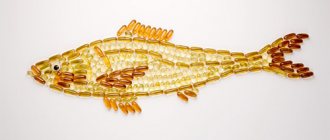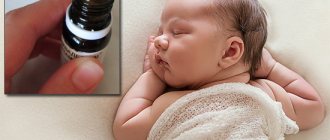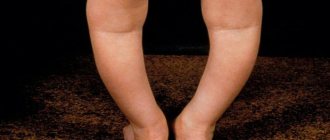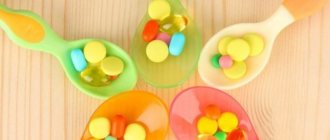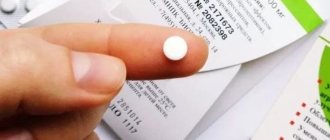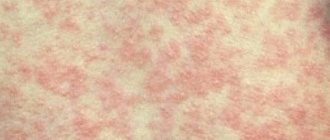For proper growth and development, the body needs vitamins. Newborns receive nutrients from breast milk.
But they are not always enough for normal life. Vitamin D is especially important for infants. With its deficiency, rickets develops.
Therefore, you need to know what medications and how to take to prevent this condition.
Getting vitamins naturally

But not all people manage to eat properly and according to the regime. In the winter-spring period, many people experience vitamin deficiency. In such a case, doctors recommend taking vitamin supplements. Medicines are divided into synthetic, semi-synthetic and natural. The latter are produced in small quantities and are not cheap.
They are obtained by processing products that contain useful substances. A real natural vitamin is a whole biological complex that is naturally associated with other elements and has a specific structure.
Semi-synthetic vitamins are obtained from natural sources through extraction, hydrolysis, distillation, and crystallization. But, in addition to natural ingredients, they contain preservatives and other chemical additives. Natural vitamins are more effective and beneficial.
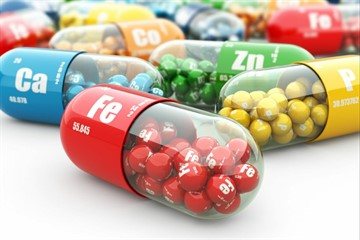
They are easier to tolerate by the body. The production of vitamins in the countries of the former USSR was organized in the 30s. At first, drugs were produced from natural raw materials.
Later, the production of synthetic analogues was mastered. Their production is cheaper, so today the main emphasis of pharmaceutical companies is on the production of unnatural vitamins.
What does the body need?
The baby that was born is very weak. In order for him to grow, develop and not get sick, he needs vitamins. Vitamin D3 (colecalciferol) is especially important.

Here's what the body needs vitamin D3 for:
- strengthening the skeletal system . Colecalciferol is responsible for the condition of teeth and bones. The correct formation of these tissues is especially important for children under one year old;
- normal functioning of the endocrine system . D3 deficiency can lead to disruption of metabolic processes, in particular calcium and phosphorus. Colecalciferol regulates insulin synthesis by the pancreas. Therefore, this substance prevents the development of diabetes;
- strengthening the immune system . Calciferol affects the area of the brain that is responsible for the production of monocytes. With a lack of vitamin D, autoimmune pathologies can occur and the body's resistance to infections and viruses can decrease;
- normal functioning of the nervous system . Vitamin D helps maintain the concentration of calcium in the blood at the required level, thereby restoring the protective membranes of the nerves.
Newborns do not have their own reserves of calciferol. They get vitamin D from mother's milk or formula. Children who are bottle-fed are guaranteed to consume the required daily amount of vitamins. Breasts may experience a lack of calciferol.
Vitamin D deficiency is manifested by the following symptoms:

- hypotension;
- convulsions;
- increased excitability;
- tearfulness;
- bloating;
- skin irritations;
- heavy sweating;
- sleep disorders.
Children who do not receive enough colecalciferol in the first years of life are at risk of developing rickets. This pathology can lead to improper formation of the skeleton, muscles, and nervous system.
Which chewable tablets are better (TOP 4)
Chewable vitamin D is suitable for strengthening the immune system in older children. An interesting shape and pleasant flavors will be loved by any child. Leaders among manufacturers:
№4 Gummi King Vitamin D
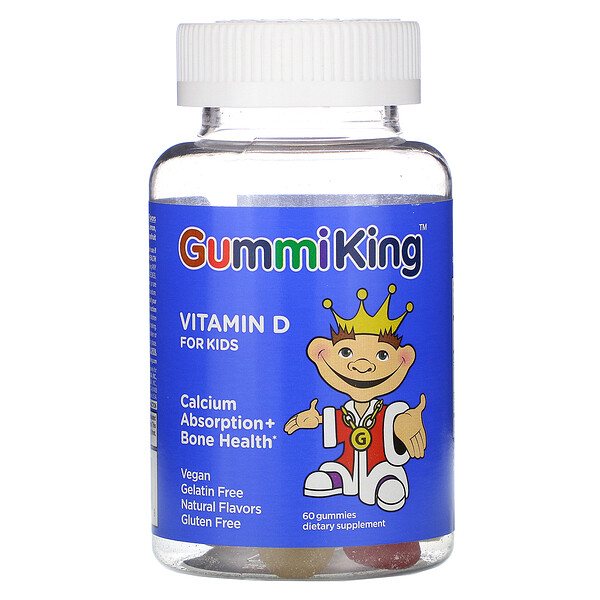
Gummi King, Vitamin D, 60 gummi
from 431 ₽
More details
Manufacturer: Vitamec USA Inc from America. There are 60 pieces of jelly candies in a jar. Take two per day. According to reviews, the little ones really like it. No dyes, all ingredients are plant-based. Allowed for use after two years. The downside is that you can only purchase it in online stores such as iHerb.
№3 Nature's Plus, Source of Life, Animal Parade, D3, 500 IU
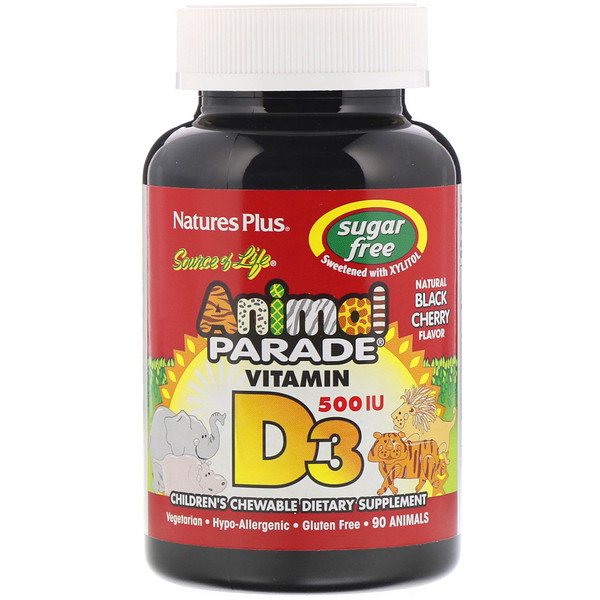
Nature's Plus, Source of Life, Animal Parade, Vitamin D3, Sugar Free, Natural Cherry Flavor, 500 IU, 90 Animals
from 705 ₽
More details
The vitamins are called “Source of Life, Animal Parade”, USA. They have a black cherry flavor, which attracts children. The bottle holds 90 animals, one per day. From the age of four.
№2 Natural Factors, D3, Strawberry Flavor, 400 IU
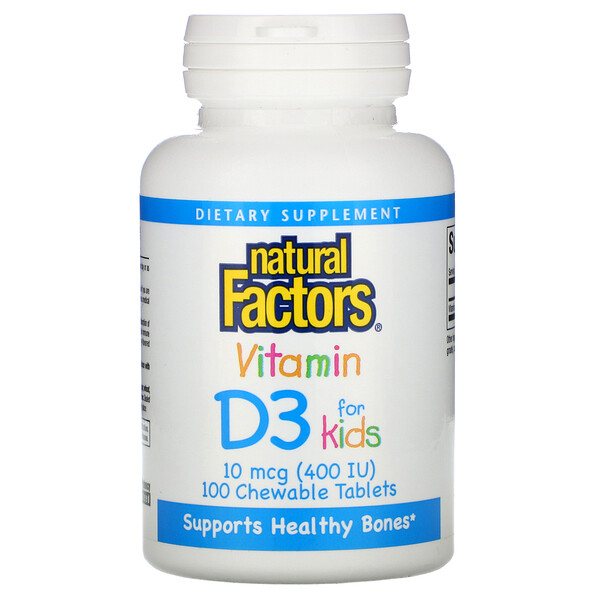
Natural Factors, Children's Vitamin D3, Strawberry Flavor, 400 IU, 100 Gummies
from 339 ₽
More details
Product from Canada. Packaging for one hundred servings. The daily dosage is one piece. Recommended from three years of age. According to reviews, children eat the tablets with pleasure - they have a strawberry flavor. Does not have artificial colors.
#1 Nordic Naturals Vitamin D Gummies Kids
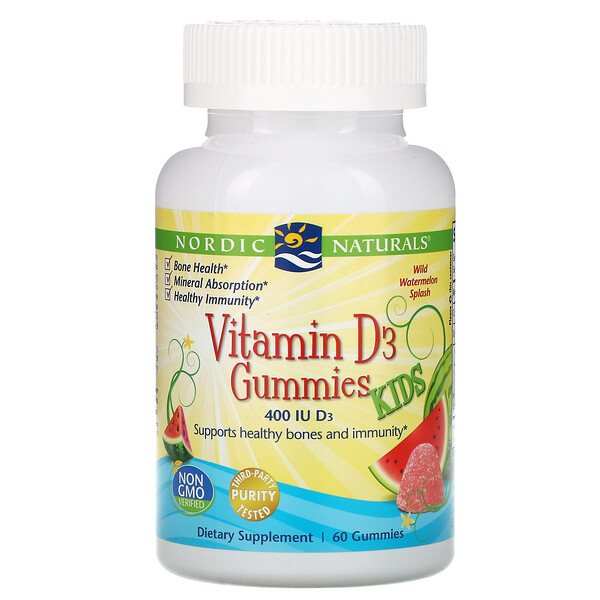
Nordic Naturals, Vitamin D3 Gelatin Sweets, 400 IU, 60 Gelatin Sweets
from 804 ₽
More details
Made in the USA by Nordic Naturals. There are 60 pieces in a package. Natural ingredients, kids like it. One candy is taken per day.
Types and names of drugs
Vitamin D3 for newborns is available in two forms: oil and aqueous solution.
The first dosage form is more physiological and effective. Aqueous solutions contain provitamin D3, which stimulates the synthesis of its own colecalciferol. This form is used to prevent rickets. Pediatricians prescribe vitamin D based on oil when a child has already been diagnosed with bone pathology. The advantages and disadvantages of different forms of drugs are shown in the table below.
| Release form | Advantages | Flaws |
| Oil solution | Rarely causes an allergic reaction. Neutral taste. Good bioavailability. No alcohol in the composition. | The therapeutic effect is short-lived and lasts for 1-1.5 months. There is a risk of overdose. Poor absorption in the presence of problems with the synthesis and secretion of bile. Contraindicated in the presence of problems with the liver, gall bladder, or pancreas. |
| Water solution | Approved for use in liver pathologies. Convenient dosing. Due to this, cases of overdose occur extremely rarely. Long-lasting therapeutic effect (up to several months). After consuming the solution, the concentration of vitamin D in the blood increases 6-7 times faster than after using an oily liquid. It is well absorbed regardless of food intake. | Contains a large number of additional components. This may cause an allergic reaction. Has a specific taste. Contains a small amount of ethyl in the composition. |
Despite the fact that calciferol is often prescribed to infants and newborns, and almost all mothers buy vitamin preparations, the pharmaceutical industry cannot boast of a wide range of products with D3. In addition, not all manufactured medications are suitable for newborns.
Aqueous solutions
Water-based preparations include Aquadetrim. It contains 15,000 IU/ml calciferol. Pediatricians prescribe Akvadetrim to children from three weeks of age for the prevention and treatment of rickets and other bone pathologies.

Aqueous solution Aquadetrim
Production of the drug is concentrated in Poland. The medicine is available in 10 ml bottles. Its average price is 410 rubles. Another drug that is often prescribed to prevent rickets is Vitamin D3, produced in Russia.
One milliliter of aqueous solution contains 15,000 IU of colecalciferol. The product is available in 10 ml bottles. The drug costs about 115 rubles. Suitable for children from three weeks of age.
Oil solutions
From oil solutions of vitamin D, pediatricians often prescribe Vigantol to children . This drug is used to regulate calcium and phosphorus metabolism and normalize the functioning of the parathyroid glands.
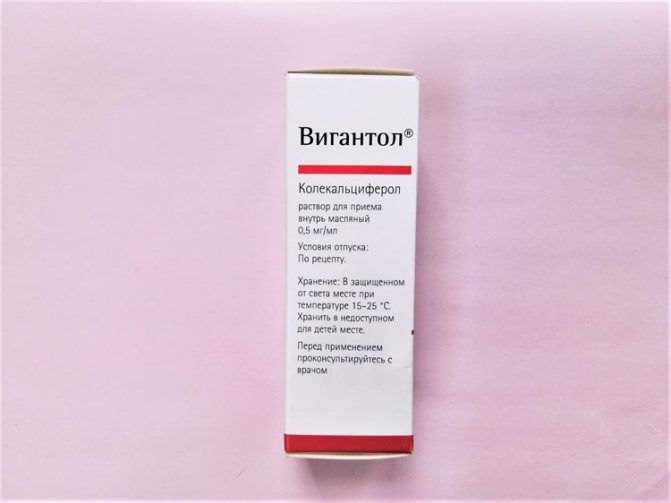
Vigantol drops
The product contains 20,000 IU of calciferol per milliliter of solution. Vigantol can be given to children from the second week of birth. The medicine is produced in 10 ml bottles. The average cost is 280 rubles.
Oil-based preparations also include Devisol. In addition to calciferol, the product contains vitamin E. It is prescribed for the prevention of rickets in children from three weeks of age. Available in 10 ml bottles. Devisol is a high-quality Finnish drug. Its price starts from 400 rubles.
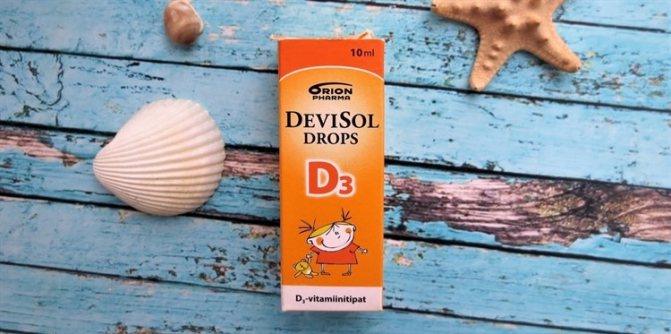
Devisol Drops
Vitamin D3 Bon is also used for the prevention and treatment of rickets in children. The drug contains 200,000 IU/1 ml of colecalciferol. Suitable for use from two weeks of age. Available in ampoules of 1 ml. Can be used orally and administered intramuscularly. The cost of the product starts from 130 rubles.
Another drug for replenishing vitamin D deficiency is Oksidevit. It contains 0.009 mg alfacalcidol. It is given to children from two weeks of age. For babies on hemodialysis, Oxidevit is prescribed in combination with vitamin D2. Available in 5 ml bottles. The average price of the drug is 300 rubles.
Recommendations for selection
The decision to take a vitamin is made by the doctor. Prescribed for the prevention of rickets, which manifests itself as symptoms:
- increased sweating of the palms, feet, and the back of the head;
- poor appetite;
- moodiness, poor sleep;
- wiping the hair on the back of the head;
- late closure of fontanelles;
- deformation of the skull bones;
- decreased skeletal muscle tone;
- deformation of skeletal bones;
- increasing the size of the abdomen;
- disproportionate development of the head and torso;
- mental retardation.
Infants born in winter, premature babies, and artificial babies are at risk. Vitamin D for a child is given from autumn to spring; during the summer months, the course of therapy is stopped to avoid an overdose of the vitamin.
Age, purpose of admission
Vitamin D for children is prescribed taking into account age, goals, and time of year.
| Child's age | Target | Dosage, IU |
| Premature babies, from two weeks to one year. | Prevention of rickets, strengthening the immune system. | 1000 |
| Premature babies, from two weeks to one year. | Treatment of deficiency. | 5000 |
| Full-term infants from five weeks to one year. | Prevention, strengthening the immune system. | 500 |
| Full-term infants from five weeks to one year. | Treatment of deficiency. | 2000 – 5000 |
| From the age of one. | Prevention. | 600 |
| From the age of 12. | Prevention. | 1000 |
In the summer months, subject to regular walks outside, the dosage is reduced to a preventive dose of 500 IU, or treatment is stopped.
It is recommended to give the child substances with D3 in the first half of the day; after a month’s course, take a break for a week.
UNIT CONVERTER: VITAMIN D
Form of substance

Decimal places as a result:
Convert
Conversion of IU ⇄ g/mg/mcg (developed by pharmacists and doctors based on reliable data)
Types of drugs
To determine which vitamin D3 will be more beneficial for children, it is necessary to consider all aspects of the different release options. For babies they are available in three types.
Infants up to one year of age are prescribed an aqueous solution. This form has several advantages:
- the gastrointestinal tract of infants is not fully developed, which prevents the breakdown of fats; an aqueous solution is easier to digest;
- act faster, the effect lasts longer;
- The drops are easy to use - 1 drop contains the daily preventive dosage.
Flaws:
- rapid absorption increases the risk of overdose;
- additional substances contained in the liquid solution can cause an allergic reaction.
A child who is one year old is prescribed an oil solution. Advantages:
- low risk of overdose due to slow accumulation;
- D3 is a fat-soluble substance, the effect is more effective;
- lower risk of individual intolerance to components.
Minus - it is slowly absorbed, not suitable for newborns due to the lack of enzymes that break down fats.
D3 in chewable tablets is prescribed to older children, they should already have teeth. Positive sides:
- children's complexes contain minerals and trace elements, calcium is especially useful - a material for building the skeletal system;
- many tablets are made in the shape of animals, they are tasty, kids chew them with pleasure;
- additional substances that give taste and color from natural ingredients, which minimizes the risk of allergies.
Disadvantage - strict control is required, it should not fall into the hands of a child - the child perceives candy as a delicacy and is able to eat too much.
Selecting an additive and manufacturer
Before deciding which vitamin D is best to buy for children, look at reviews on the Internet, read the instructions, and study the composition. Parameters to pay attention to:
- Plant-based - the less synthetics, the healthier. Preservatives in the form of alcohol are undesirable. Natural compositions are found in foreign brands. It is difficult to find in pharmacies; they are purchased through online stores such as iHerb. The disadvantage is the high price, the taste is not very pleasant, but absorption is better, the absence of additives and GMOs does not harm the child.
- Mode. Selected in accordance with the age capabilities of the baby. Until one year of age, vitamin D is given to children on a liquid basis, because the absence of teeth does not allow chewing.
- Drug consumption. How many international units are contained in the drug? Low D3 concentration results in high consumption rates. The low cost in such cases becomes deceptive.
- Reliable manufacturer. For a child, it is better to choose companies that are at the top of the ratings and have a reliable reputation. Good reviews about companies MegaFood, Garden of Life, Solgar, MERCK, Akrikhin and others.
- Monitor expiration and storage dates. Long terms indicate a large number of preservatives. Small ones are inconvenient - you cannot give an expired vitamin.
Share your recommendations for choosing medications for your child.
From what age and until what age should it be given?
Vitamin D is mandatory for children born in the autumn-winter period. This is explained by the fact that at this time there is a shortage of sunlight, which is a source of colecalciferol.

Many parents are interested in at what age it is recommended to give vitamin D supplements. It all depends on the baby’s condition. For example, for premature babies, products with calciferol are indicated from 7-10 days after birth.
Pediatricians recommend that infants born at term take vitamin D from 3-4 weeks of age. Such medications are given for a long time, usually up to 2-3 years.
If a child is at risk of developing rickets and has a rickets-like condition, then taking calciferol is justified until the age of six. In the period from May to September, it is recommended to take breaks from the course of vitamin therapy, since the calciferol deficiency during this period is well compensated by the sun. If rickets is present, pediatricians advise giving the child vitamin D, oil-based, for 4-6 weeks.
Vitamin D for children under one year old oil solution
After birth, the child’s body actively stores useful substances that enter the body with mother’s milk. Not only proteins, fats and carbohydrates are important for babies, but also microelements. The baby's body has a special need for vitamins.
In most cases, the baby receives a sufficient amount of them with mother's milk, but the mother cannot provide the baby with vitamin D (D) in full.
The role of this vitamin is extremely important for the development of the baby, so pediatricians from the first visits to the newborn focus on the need for its additional intake.
What is vitamin D?
Vitamin D is presented in several forms, which are combined into a single name - calciferols. There are two interchangeable varieties of it - D2 (ergocalciferol) and D3 (cholecalciferol). Sunlight can only provide the body with vitamin D3, while food is a source of both forms.
Vitamin D may not be enough if the child is premature or born in the autumn-winter period. It is quite clear that such children spend less time in the sun, so their body is at risk. This theory has been undeniable for a long time, but modern medicine has stepped far forward and doctors believe that this is not the problem.
The amount of vitamin D that is formed in the skin is negligible, but a deficiency of the vitamin in food products that a nursing mother eats can significantly affect the amount of vitamin D entering the baby’s body. Therefore, at the initial stage of child development, doctors recommend safe therapeutic doses of calciferol to all infants.
If certain pathologies appear, the dose of vitamin D can be adjusted.
What is this vitamin for?
Like all vitamins, calciferol performs several important functions. In particular:
- actively participates in the formation of bones, muscle fibers and neurons;
- helps strengthen the body's immune system;
- can accumulate calcium and phosphorus in the skeletal system and teeth, thereby ensuring their strength;
- prevents the growth of malignant cells.
If the level of vitamin D in the body is insufficient, the child is at risk of rickets. With this disease, bone tissue is characterized by pathological softness and inability to withstand the loads of the body.
The bone pores in children with rickets are much larger, while the bones of healthy children have a microporous structure.
The inability to form bone trabeculae (septa) is a direct consequence of vitamin D deficiency in the child’s body.
Symptoms of vitamin D deficiency:
- later the fontanelle closes;
- arms and legs become bent;
- stoop appears in the spinal column;
- the shape of the skull changes;
- the jaw takes on an ugly shape;
- subsequently, signs of mental retardation appear.
Komarovsky about vitamin D for infants
Symptoms of vitamin D overdose or allergies?
Not only a lack of vitamin D is dangerous, but also its excess (hypervitaminosis). By the way, this condition is quite rare and appears not from a one-time overdose of the drug, but as a result of systematically exceeding it, recommended by a doctor in the treatment or prevention of rickets.
It is enough to give the baby an increased amount of vitamin D for 2-3 weeks so that this leads to a pronounced picture of its overdose, and after 6-8 months the intoxication will become chronic.
Hypervitaminosis is also observed with individual hypersensitivity to vitamin D, which often develops if a woman took it during pregnancy. Such children may react even to small and moderate amounts of the vitamin.
A true allergy to vitamin D is extremely rare; much more often, external manifestations on a child’s skin (itching, rashes, peeling) are signs of an overdose of vitamin D, rather than an allergy to it.
The main symptoms of overdose that you should pay attention to are:
- signs of general intoxication (lethargy, poor sleep and appetite, pallor);
- the child's diapers have to be changed more often than usual due to increased urine output;
- the liquid that the child drinks becomes significantly larger, which can be regarded by the mother as hunger in children in the first months of life;
- if the mother for a long time cannot understand what the child needs and limits fluid intake to the same volume as before, this can lead to dehydration of the body, the external sign of which is dry skin and loss of elasticity;
- the appearance of abundant and frequent regurgitation, vomiting;
- decreased monthly weight gain;
- premature closure of the large fontanelle;
- constipation or intestinal upset.
If you suspect an overdose of vitamin D, the doctor will definitely recommend additional examination in the form of blood tests, since in this case there is an increase in calcium in the blood due to its poor binding in the bones. Unbound calcium, along with the blood flow, enters the vessels of the heart and kidneys. where its deposition begins, which disrupts the functioning of these organs.
Tests for vitamin D overdose include:
- General blood analysis.
- General urine analysis.
- Determination of calcium and phosphorus content in blood serum.
- Determination of calcium in urine (Sulkovich test).
- Determination of vitamin D metabolic products in blood plasma.
Additional examination in the form of ultrasound or ECG, consultation with specialists may be required only in severe cases, in order to find out how far the process has gone.
Important! Avoiding an overdose of vitamin D will help you take it according to strict doctor’s instructions (it is advisable to consult several specialists) and in compliance with the recommended dosage.
If there is a slight deficiency of vitamin D, it is better to give preference to products containing it (sea fish, cheese, dairy products) than pharmaceutical products and, of course, spend more time walking with your child in sunny weather.
vitamin D in food
Which vitamin D solution is better: oil or water?
Despite the fact that vitamin D is a frequently prescribed remedy for children and almost all mothers give vitamin preparations to their infants, the pharmacy chain is not at all replete with vitamin D products that can be prescribed to infants. Among the variety of drugs that include various forms of calciferol, not many are indicated for children from birth.
Vitamin D preparations, depending on the base, are divided into two types:
- oil form;
- an aqueous form containing tiny fat globules containing the vitamin.
Advantages of the water form:
- absorbed 5 times faster, reaching higher concentrations;
- the effect of taking it lasts twice as long as from the oil form;
- high bioavailability;
- well absorbed regardless of food intake;
- the effect of taking the drug occurs faster;
- convenient form for dosing.
How is this effect achieved? The thing is that any fat entering the digestive tract is exposed to bile salts, which break it into separate fat droplets, creating an emulsion.
This ensures enzyme access to fat and its further breakdown.
Thus, if vitamin D enters the body in oil form, then the drug must go through this stage before it is absorbed, and if in aqueous form (more correctly, micellar), then absorption begins much faster.
The aqueous form of vitamin D is prescribed to babies born prematurely. Their gastrointestinal tract does not produce enough special substances to break down the vitamin in a fatty environment (in mother’s milk), so such patients are only shown an aqueous solution of vitamin D.
Some of the advantages of the water form also have negative sides:
- the body’s ability to absorb vitamin D from these drugs is higher, which increases the risk of overdose if instructions are not followed or if treatment is inadequate;
- aqueous forms contain many excipients that can cause individual intolerance.
Important! If there really are serious reasons for prescribing vitamin D, then for correction as soon as possible and subject to good tolerance, it is better to give preference to the aqueous form.
Which vitamin D drug is best for infants?
Let's look at the most popular drugs that are often prescribed by doctors. Their main active ingredient is cholecalciferol (vitamin D3), the preparations of which are considered more effective and modern compared to ergocalciferol (vitamin D2).
Aquadetrim is a water-based vitamin D preparation
The drug is used for vitamin deficiency in the body, for the treatment and prevention of rickets and other bone pathologies (for example, metabolic pathologies). Contraindications for use are individual intolerance to the components of the drug, hypervitaminosis. The drug is prescribed to children from the fourth week of life.
This can be an obstacle in young children, so doctors in this case replace Aquadetrim with Vigantol and Vitamin D3, which are prescribed earlier (from the tenth day of life). The drug is diluted in a teaspoon of water. The course of treatment averages 1-1.5 months.
Biochemical blood parameters are monitored throughout the entire period. If necessary, the pediatrician prescribes a repeat course with a break of a week. To prevent an overdose of the drug, in no case should you increase the dose prescribed by your doctor.
If a child develops convulsions, nausea, vomiting and other alarming symptoms, discontinue the drug and consult a doctor.
Oil-based preparations
The drug is also prescribed to children with vitamin D deficiency to regulate the metabolism of calcium and phosphates in the body. In addition, Vigantol is able to normalize the activity of the parathyroid glands. The drug is absorbed in the small intestine, accumulates in the bones, liver, skeletal muscles, cardiac tissue, and kidneys. Maximum accumulation occurs approximately five hours after administration.
Metabolites are excreted primarily in bile. The drug is prescribed for the treatment of rickets, to prevent calciferol deficiency in the child’s body, as well as for malabsorption, pathologies of the small intestine, hypocalcemia, and osteoporosis of various origins.
Contraindications to the prescription are excess calcium, as well as individual intolerance to the components of the drug.
The drops are diluted in a teaspoon of milk or given with another liquid. The dosage regimen for rickets is as follows - the drug is prescribed in the first and second months of life, and then in the fifth and ninth months. In the second year, the drug is given as prophylactic courses in winter. The dose may be adjusted depending on improvements in the biochemical parameters of the baby's blood test.
Available in various dosages, which is very convenient for use. In addition to cholecalciferol, the drug contains alpha-tocopherol. The effect of the drug is similar to Aquadetrim and Vigantol. Therapy lasts about two months, then babies are transferred to preventive dosages.
Dosage and price of vitamin D3 medications
Name of the drug, price Dosage form of vitamin D Age Dosage for the prevention of rickets Dosage for the treatment of rickets
| Aquadetrim (Russia, Poland) 170-200 rub. | Water based drops. | 15,000 IU/ml 1 drop – 500 IU | Children from 1 month to 2-3 years. | 1-2 drops/day. | 4-6 drops. The exact dosage is determined by the doctor. |
| Premature babies from 1 month. | 2-3 drops/day. | ||||
| Wigantol (Austria, Germany, Japan) 180-200 rub. | Oil solution. | 20,000 IU/ml 1 drop – 667 IU | Children from 2 weeks. | 1 drop/day | 2-8 drops/day. |
| Premature babies from 2 weeks. | 2 drops/day | ||||
| Vitamin D3 (Russia) 129 rub. | Oil solution. | 20,000 IU/ml 1 drop – 667 IU | Children from 2 weeks. | 1 drop/day | 2-8 drops/day. |
| Premature babies from 2 weeks. | 2 drops/day |
What are Finnish vitamins D3?
In addition to medications, there are dietary supplements (dietary supplements) containing vitamin D. The difference between them and medications is that they are taken for the purpose of prevention, not treatment.
In addition, their effect lasts less than that of drugs. They contain absolutely no synthetic additives.
To preserve the drugs for a long time, a natural antioxidant is added to them - alpha-tocopherol acetate (vitamin E).
There is an opinion that some Finnish-made vitamins are much better than medications, but this opinion is wrong.
These drugs are registered in Russia as dietary supplements or are not included in the register of state registration certificates at all (Devisol).
Therefore, if a child is prescribed a vitamin D drug for therapeutic purposes, then if the drug is well tolerated, it is better not to replace it with a dietary supplement.
Dosage and price of vitamin D3 in the form of dietary supplements
Name of dietary supplement, price Form of vitamin D release Age Dosage
| D3 Vit Baby (Poland) - 250 rub. | Oil solution in capsules. | 1 capsule – 200IU | Children from birth to 3 years. | Contents: 1 capsule once a day. |
| Devisol (Orion Pharma, Finland) - 400 rubles. | Oil solution. | 1 drop – 80 IU | Children from birth. | 5 drops/day |
| Minisan (Verman, Finland) - 300-400 rubles. | Oil solution. | 1 drop – 100 IU | Children from 1.5 to 3 years old. | 2 drops/day |
| Children from 3 years old. | 4 drops/day |
Source: https://vitamingid.ru/articles/vitamin-d-dlya-detey-do-goda-maslyanyy-rastvor/
Instructions for use of drops for babies and infants
Vitamin D should be given to your child according to the instructions. Aqueous and oil solutions are pre-dissolved in milk or other liquid. Both dosage forms should be taken in the morning after eating.
Calciferol preparations are indicated in the following cases:

- the baby lives in a northern region where there is a shortage of sunlight;
- breastfeeding type. If a child feeds exclusively on mother’s milk, then it is necessary to monitor the concentration of vitamin D in the child’s body;
- autumn-winter period. At this time, the sun shines less often and not so brightly, walks become shorter. This helps reduce vitamin D production.
The dosage and regimen of taking calciferol drugs depends on when the child was born and the severity of the disease. Thus, as a preventative measure, pediatricians recommend giving premature babies 1000-1500 IU of vitamin D per day (which corresponds to approximately one drop).
Those babies who were born on time are prescribed 500-1000 IU per day. If a child has rickets, then higher doses of vitamin preparations are selected.
When calculating the optimal dosage, the doctor takes into account the following points:

- area of residence;
- age;
- type of feeding;
- condition of bone tissue.
Taking calciferol is contraindicated in the following cases:
- chronic and acute diseases of the kidneys and liver;
- tuberculosis;
- individual intolerance to the components of the product;
- cardiac problems.
You should not start giving your baby vitamin D without consulting a doctor. If there is an excess of this element in the body, the likelihood of developing an allergic reaction increases. It is also worth temporarily stopping taking the drug if vaccination is planned.
Experts advise using calciferol simultaneously with vitamins B1, B2, B6, C, E, A, magnesium and calcium salts, and pantothenic acid. These compounds enhance each other's effectiveness.
Oil solutions D3: TOP-5
The names of oil preparations are arranged in increasing order of the number of positive reviews. The availability of vitamins in Russia was also taken into account.
№5 Orion Pharma, DeviSol Drops D3
The cost of 1 serving is 6 rubles. 70 kopecks
- Country of origin: Finland;
- bottle volume – 10 ml;
- dose of active substance 1 drop – 80 IU.
Finnish Oil Solution is suitable for prophylactic use and has no taste. It contains cholecalciferol and purified coconut oil.
Pros:
- the drug does not cause allergies;
- The bottle is equipped with a convenient dispenser.
Minuses:
- low concentration of D3;
- difficult to find in Russia.
#4 California Gold Nutrition, Children's Vitamin D3 Drops
California Gold Nutrition, Children's Vitamin D3 Drops, 400 IU, 0.34 fl oz (10 ml)
★★★★★
from 607 ₽
Price for 1 serving – 1 rub. 70 kopecks
- Country of origin: USA;
- volume – 10 ml;
- the concentration of cholecalciferol in 1 drop is 400 IU.
The drug for babies contains vitamin D3 and coconut oil. This supplement from California Gold Nutrition is iTested and free of toxic substances and allergens. Recommended by the American Academy of Pediatrics.
Getting Vitamin D Naturally
To compensate for vitamin D deficiency, it is not necessary to take medications. It is easy to increase the level of this substance naturally.
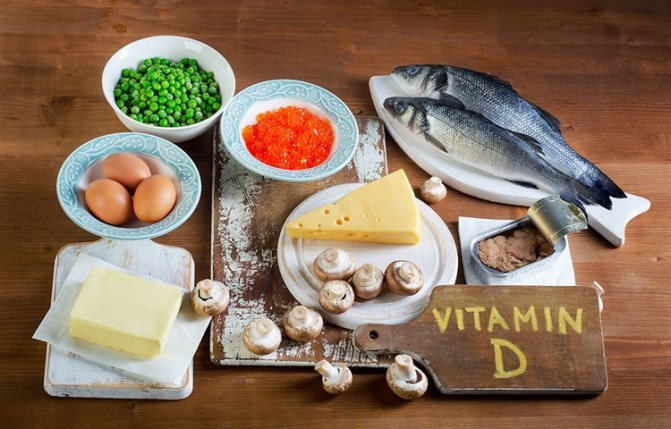
Sources of vitamin D
Vitamin D is produced in the epidermis under the influence of sunlight. It is then converted by the kidneys and liver into the D3 metabolite. For this process to be successful, clean air is necessary.
In countries with high levels of dust and gas pollution, there is a problem of mass childhood rickets. The second source of vitamin D is food. Newborns and infants receive this useful element with adapted formulas and breast milk.
Children on complementary foods can further increase their calciferol levels with the following foods:
- fish liver;
- seafood;
- beef;
- milk;
- oatmeal;
- parsley;
- potato;
- butter;
- raw yolks.
Thus, to increase calciferol levels, the following is indicated:
- frequent and long walks, especially on sunny days;
- using an ultraviolet lamp in winter;
- inclusion in the diet of foods that are rich in this vitamin.
Natural replenishment of D3 deficiency should be under the supervision of a doctor. If the doctor notes that no significant changes are observed, then you need to start taking medications with calciferol.
Video on the topic
Dr. Komarovsky about vitamin D for children:
Vitamin D is very important for infants. This element is responsible for the growth and strength of bones, the development of the nervous and immune systems. Children receive a certain amount of calciferol during a walk on a sunny day, through breast milk, and complementary foods. But it happens that this is not enough to maintain vitamin D at the required level.
In such cases, it is recommended to take products containing calciferol. They are available in aqueous and oily solutions and are suitable for children from two weeks of age. Doctors usually prescribe Aquadetrim, Vigantol, Devisol, Oksidevit for newborns and infants.
Aqueous solutions D3: TOP-3
The names of medications containing vitamin D for newborns are sorted by the number of positive reviews and availability in Russian pharmacies.
No. 3 Pharmstandard-Leksredstva OJSC, Complivit Aqua D3
The price of 1 serving is 55 kopecks.
- Country of origin: Russia;
- volume – 10 ml;
- D3 dosage in 1 drop – 500 IU.
The supplement is well absorbed in the small intestine, regardless of the state of the enzyme system. The manufacturer recommends giving the medicine to a child starting at 4 weeks of age. The drug can be taken by children for the treatment of mild and moderate rickets, as well as for the prevention of vitamin deficiency.
Pros:
- The dietary supplement has a pleasant smell;
- cheaper than analogues.
Minuses:
- inconvenient dispenser.
№2 ChildLife Essentials, Vitamin D3
ChildLife, Vitamin D3, Natural Berry Flavor, 1 fl oz (30 ml)
★★★★★
from 482 ₽
The cost of 1 serving is 2 rubles. 60 kopecks
- Country: USA;
- bottle volume – 30 ml;
- the dose of the active substance in 1 drop is 62.5 IU.
Water-soluble Vitamin D for infants additionally contains glycerin and alpha-tocopherol, as well as natural “Berry” flavoring. The drops can be given to the child in pure form or mixed with water.
Pros:
- the drug does not produce side effects;
- does not irritate the intestines.
No. 1 Medana Pharma, AquaDetrim (Colecalciferol)
Aquadetrim (Vitamin D3) solution 15 thousand. IU/ml 10ml
from 187 ₽
Packaging cost – from 191 ₽
The price of 1 serving is 65 kopecks.
- Country of origin – Poland;
- volume – 10 ml;
- the dose of vitamin in 1 drop is 500 IU.
First on the list is a Polish drug popular among Russian doctors. It is mainly used for the prevention or treatment of rickets. AquaDetrim can be given to children older than 1 month.
Pros:
- the supplement quickly eliminates hypovitaminosis D;
- The bottle is equipped with a convenient dispenser.
Minuses:
- may cause constipation;
- has a strong anise smell.
